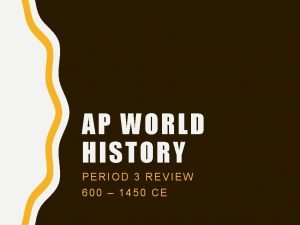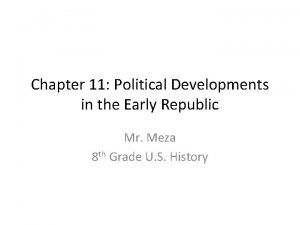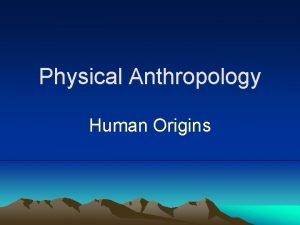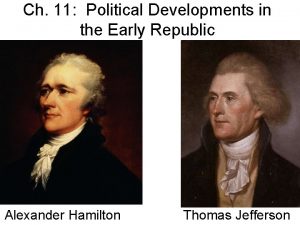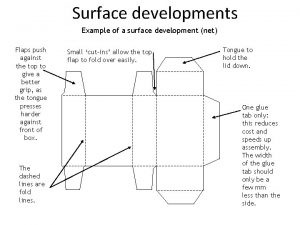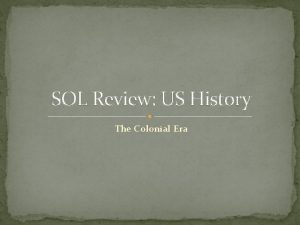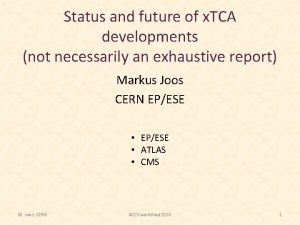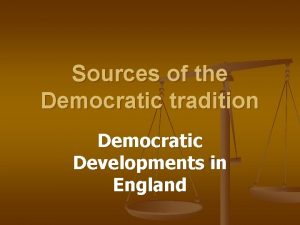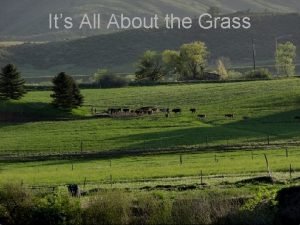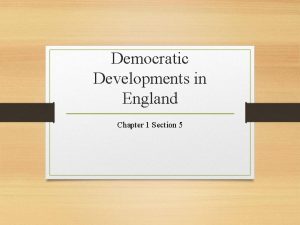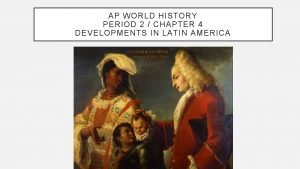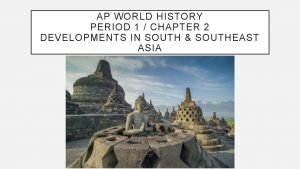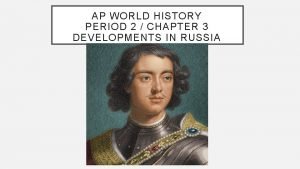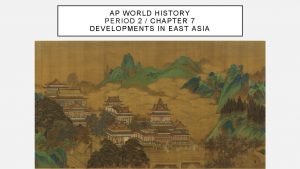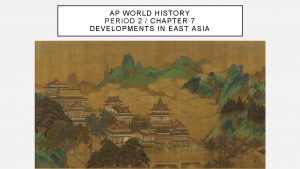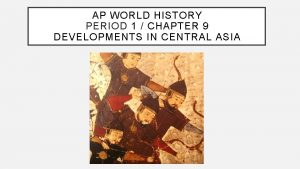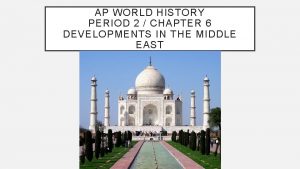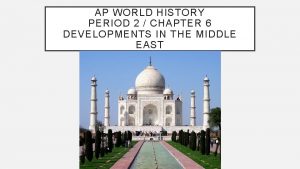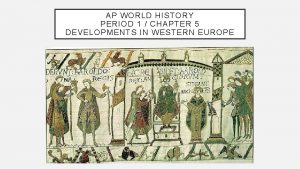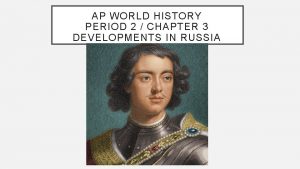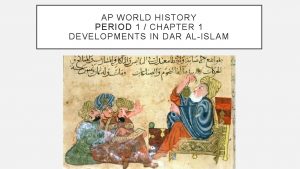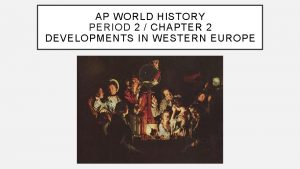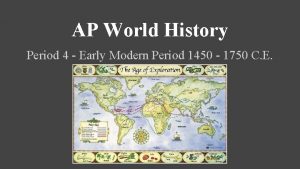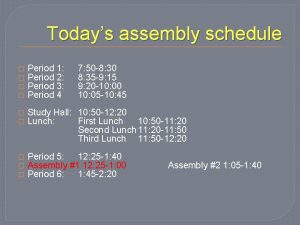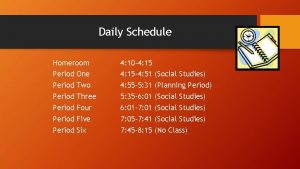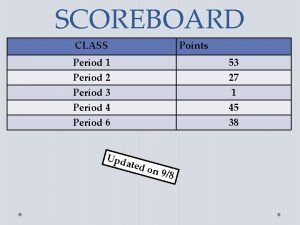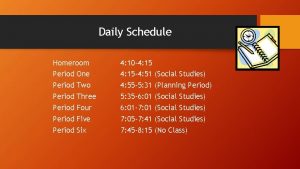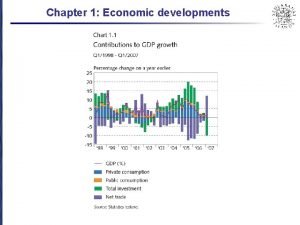AP WORLD HISTORY PERIOD 1 CHAPTER 6 DEVELOPMENTS


























- Slides: 26

AP WORLD HISTORY PERIOD 1 / CHAPTER 6 DEVELOPMENTS IN THE AMERICAS

TOLTECS: PRECURSORS TO THE AZTECS • Pre-Columbian: before the voyages of Columbus and the conquests of the Spanish • Groups develop in isolation • Toltec Empire (968 -1150) • Central Mexico • 968: Capital at Tula established • Long-distance trade, even to American SW • Belief in Quetzalcóatl (feathered serpent; one of the main Pre. Columbian gods) • Heavily militaristic (sacrifice, war) • 1150: Collapse, probably caused by northern nomadic attacks


AZTECS (AKA MEXICA) 12 TH – 15 TH CENTURIES • After Toltecs collapse, political power and people move to shores along Lake Texcoco • One of those groups are the Aztecs in the early 13 th c • Lake Texcoco provides fishing, farming, and transportation • Valley by Lake Texcoco inhabited by groups organized into citystates • Many vie for control of lakes winners are Aztecs • Who are the Aztecs? • Speak Nahuatl (Toltec language) and worship Quetzalcóatl; lends legitimacy to rule • 1325: Aztecs found Tenochtitlan (city on island in center of Lake Texcoco) • 1434: Aztecs dominate central valley; conquer other city-states to make tribute empire (demand financial payments and prisoners to use for Aztec human sacrifices)

TENOCHTITLAN: AZTEC CITY STATE • Included: • Temples • Royal palace • Canoes and canals • Farming • Zoo and aviary • Bustling markets selling chocolates, textiles, parrots, feathers, stones, slaves

• What helped the Aztecs establish power in the Central Mexican valley? QUICK REVIEW QUESTION • Describe the newly established Aztec Empire.

AZTEC SOCIETY • As the Aztecs became solidified as the most powerful group around Lake Texcoco, Aztec society transformed into a rigidly hierarchical society 1)Ruler • Head of state/religion • Representative of gods on earth 2)Nobles 3)Peasants 4)Slaves (war captives) • Clans (calpulli) dictate social status • A large gap emerges between nobility and

AZTEC TRIBUTE LISTS • Tribute lists show what items that tribute territories (controlled by the Aztecs) would send to the Aztecs • Way of organizing tribute items • Common items: • Bird feathers • Greenstone or jade • Animal hides

AZTEC RELIGION • Highly motivated by religious zeal • Dedicated to service of gods • Spiritual and natural world seamless • Hundreds of deities • Mostly focused upon fertility, agriculture, water/rain • Aztecs worshipped gods through festivals, ceremonies, feasting, dancing, warfare, and sacrifice • Sacrifice: a component of worship • Huitzilopochtli (deity of war, sun, and human sacrifice) needs strength • Patron of Tenochtitlan • Motivated by religious conviction? Or terror and political control? • Includes ritual cannibalism • War captives supply Aztecs with sacrificial victims


AZTEC ECONOMY • Mostly an agrarian community • Chinampas: man-made floating islands that yielded large amount of crops, constructed to provide additional farming land upon the lake • Maize, corn, and beans • No use of wheel or laboring animals • Merchants worked in daily markets

GENDER AND AZTEC SOCIETY • Aztec women’s responsibilities: household care, cooking, weaving • Women had to grind corn by hand on stone boards; time-consuming • No wheels or suitable animals for power like Europe • Lack of appropriate technology • Women could own/inherit property and will it to theirs • Arranged marriages were common • Elite were often polygamous

• What belief necessitates Aztec sacrifice? QUICK REVIEW QUESTION • What is the agricultural innovation the Aztecs use to increase available farmland?

INCA EMPIRE • Precursors were the Chimor Kingdom (900 -1465) • Control of north coast of Peru • Incas conquer Chimors by taking over irrigation systems and cutting off access to water • Inca Empire (Twantinsuyu) • Quechua-speaking clans from southern Andes Mountains • By 1350, Incas live centered around and in Cuzco (capital city) • Control other regions by 1438, • Led by Pachacuti (ruler, or inca) • Centered around Lake Titicaca • Fishing, irrigation, farming • Aggressive expansion for 60 years by Pachacuti, his son, and

TECHNIQUES OF THE INCA • Highly centralized • Inca ruler; governors of four provinces; bureaucracy • Local rulers maintain their positions providing they defer to Inca rule • Integrated various ethnic groups into an tribute empire • Quechua is spread as language to unite empire • Military: System of roads, pay stations (tambos), storehouses • Extensive irrigated agriculture; large building and irrigation projects • “Split inheritance” necessitates conquest

INCA CULTURE • Viracocha (creator/sun god) is highest • Temple of the Sun at Cuzco is center of state religion • Local gods allowed to survive • Cult of ancestors, deceased rulers mummified • Inca gods are animistic • Cultural Achievements • Metallurgy (copper, bronze) • No writing system but knotted strings (quipu) for accounting • Monumental architecture (steep slopes) • Farming: potato; maize

INCA SUN TEMPLE OF CUZCO (QORIKANCHA) • Temple of Qorikancha was dedicated to the Inca sun god, Inti • Inti provides for and powers all life on earth • In front would have been a life size sculpture garden giving thanks to Inti by revealing the Inca empire in miniature (maize cobs; Inca people; llamas) • The temple was covered entirely with gold • When the Spanish conquer the Inca, they destroy all but one wall of the temple (after removing the gold), then build the Church of Santo Domingo on top of it

COMPARISON OF INCA AND AZTECS Similarities Differences Built on earlier empires that preceded them (Aztecs = Toltecs; Inca = Chimor) Aztecs have sophisticated traders and markets VS Inca have no specialized merchant class Excellent imperial and military organizers Aztecs have a writing system VS Inca do not Highly organized agricultural sector under state control Ethnic groups allowed to survive (Inca incorporate them into empire; Aztecs rule them harshly) Animistic religions No draft animals for labor

• What similarities do the Aztecs and Inca have? • What differences? QUICK REVIEW QUESTION

PEOPLES OF THE AMERICAS • Great variety; adapt to region • Only two large states/empires formed • Aztecs and Inca • Weakened by European contact • Long distance/regional trade common • By 1500: 200 languages • Agriculturalists; nomads • Communities are technologically behind Europeans, Chinese, Arabs Major Linguistic Groups in North America

MAYA 2000 BCE – 900 CE • Developed the most sophisticated writing system in the Pre-Columbian Americas • Enormously important and dominant Mesoamerican civilization • Unlike other groups, Maya were all clustered in one geographic area • At peak, Maya may have reached 2 million people • Known for art, architecture, mathematics, calendar, and astronomical system • Especially in the Classical Period: 250 – 900 CE • Mayans are not centralized – there is no Maya empire to speak of. They were broken and divided into warring Maya city states. • Maya rule was based on ritual authority of the ruler • This means that rulers were ill-equipped to quickly address trade and food distribution • Maya collapse around 900 CE: major political tumult; abandonment of

CHACO CANYON • Part of the Ancestral Puebloans of the American SW, the Anasazi constructed underground buildings (kivas) in New Mexico • The large Anasazi community at Chaco Canyon had a population of about 15, 000 people • Practiced hunting, trade, and irrigated agriculture. • Multi-level (5 story) buildings could hold 800+ people • Indicates tremendous labor of stonecutting and masonry • Lived here for about 350 years beginning around 900 CE (marks an explosion of activity across the region) • The Anasazi civilization declined in the twelfth and thirteenth centuries as a result of drought, overpopulation, and warfare. • Sometimes called the Chaco Phenomenon the Anasazi built 700 miles of roads. The purpose is not known.

MESA VERDE • Ancestral Puebloans known as the Anasazi resided in the Mesa Verde Canyon in Colorado • Agriculturalists who lived in Colorado, New Mexico, & Arizona • Famous for the Mesa Verde Cliff Dwelling within a canyon • Known as a pueblo: communal village of flat-roofed structures • Some were 5 -6 stories tall • Built into the side of the cliff using stone and mud mortar • Why move here? • Did canyon provide protection from tribes? Spiritual significance? Protection from elements? • Abandoned in 1300 CE – why?

CAHOKIA • Native American tribe called the Mississippians resided in modern-day Ohio and the surrounding area. • Economy was based on hunting and gathering and was supplemented by agriculture. • Largest settlement/city called Cahokia north of Mexico • Had 30, 000 people living there • Built large mounds both as burial sites and as platforms upon which temples and residences of chiefs were constructed. • Over 120 earthen mounds; meant moving 55 million cubic feet of earth

• Can you name one distinguishing characteristic of each of the following? • Maya QUICK REVIEW QUESTION • Chaco • Mesa Verde • Cahokia

SUMMATIVE GROUP ACTIVITY • Pretend you are a rival of the Aztecs and you hear that they use human sacrifice. What would you think about them? Write out a paragraph explaining your reaction when you learn of this.
 Ap world history chapter 25 africa and the atlantic world
Ap world history chapter 25 africa and the atlantic world Whap period 3
Whap period 3 Ap world history period 2 test
Ap world history period 2 test Chapter 11 political developments in the early republic
Chapter 11 political developments in the early republic Bad world tour
Bad world tour Recent developments in ict
Recent developments in ict Recent developments in object detection
Recent developments in object detection Sahelanthropus tchadensis cultural development brainly
Sahelanthropus tchadensis cultural development brainly Peter rosenwald
Peter rosenwald Political developments in the early republic
Political developments in the early republic Peter catana
Peter catana Netflaps
Netflaps Transmission developments
Transmission developments In the colonial era developments such as the new england
In the colonial era developments such as the new england Target developments
Target developments Definition of pattern of development
Definition of pattern of development Sheet metal pattern development
Sheet metal pattern development Comtel atca
Comtel atca Democratic developments in england
Democratic developments in england Cplim
Cplim Name of prism
Name of prism Medical development international
Medical development international Donmeg developments
Donmeg developments Democratic developments in england
Democratic developments in england The development of children 7th edition
The development of children 7th edition Refractory period
Refractory period When is the relative refractory period
When is the relative refractory period

